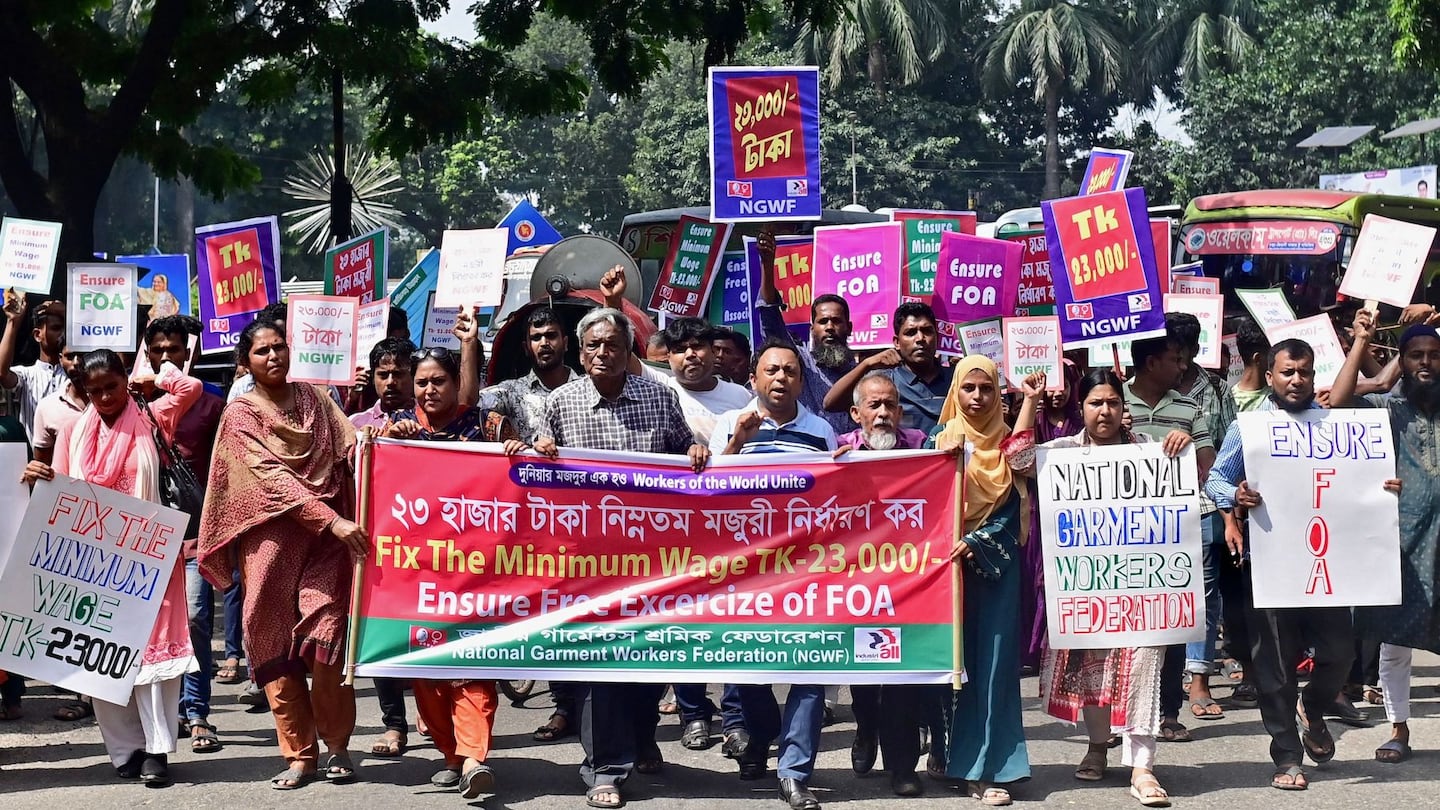
The Business of Fashion
Agenda-setting intelligence, analysis and advice for the global fashion community.

Agenda-setting intelligence, analysis and advice for the global fashion community.

One woman was killed as police in Bangladesh used teargas and rubber bullets to disperse stone-throwing protesters as a demonstration by garment workers for more pay turned violent on Wednesday.
The latest death was the third since protests erupted in the past week. On Tuesday, the government said that the minimum wage would rise by 56.25 percent to 12,500 taka ($114) a month from Dec. 1, the first increase in five years, but the workers are demanding almost twice the amount offered.
Police said hundreds of workers had taken to the streets in the garment hub of Gazipur, on the outskirts of the capital Dhaka.
“The workers blocked roads and vandalised several vehicles. We had to use tear gas, rubber bullets and sound grenades to disperse the unruly workers, who were throwing brick chips at us,” local police officer Ashraf Uddin said.
ADVERTISEMENT
The worker was injured in the clash and died on the way to hospital, the police officer added without providing further details.
The area remained tense and there was heavy police presence, witnesses said.
The US State Department condemned the violence.
“We call on the government of Bangladesh to protect workers’ right to peaceful protest and investigate allegations of false criminal charges against workers and labor leaders,” the State Department said in a statement.
Low wages have helped Bangladesh build its garment industry, with some 4,000 factories employing 4 million workers, supplying brands such as H&M and GAP. Readymade garments are a mainstay of the economy, accounting for almost 16 percent of GDP.
Siddiqur Rahman, the owners’ representative on the wage panel, urged workers to return to work and said that continuing unrest could threaten livelihoods.
“In the greater interest of the sector, we agreed to the rise. Everyone must refrain from such anarchy. Otherwise, they will pay for it. If factories are closed, how will you earn?” Rahman said.
One protester was unmoved: “We will continue protesting until we realise our demand.”
ADVERTISEMENT
The protests have coincided with violent anti-government demonstrations demanding the resignation of Prime Minister Sheikh Hasina and calling for a free and fair vote under a caretaker government.
By Ruma Paul
Learn more:
Bangladesh Hikes Minimum Wage for Garment Workers After Protests
Bangladesh will raise the minimum wage for garment workers by 56.25 percent, the first hike since 2019.
Traces of cotton from Xinjiang were found in nearly a fifth of samples from American and global retailers, highlighting the challenges of complying with a US law aimed at blocking imports that could be linked to forced labour in China.
The fashion industry continues to advance voluntary and unlikely solutions to its plastic problem. Only higher prices will flip the script, writes Kenneth P. Pucker.
The outerwear company is set to start selling wetsuits made in part by harvesting materials from old ones.
Companies like Hermès, Kering and LVMH say they have spent millions to ensure they are sourcing crocodile and snakeskin leathers responsibly. But critics say incidents like the recent smuggling conviction of designer Nancy Gonzalez show loopholes persist despite tightening controls.